Things You'll Need
Purple PVC primer
PVC pipe cutters
Cloth rags
PVC cement
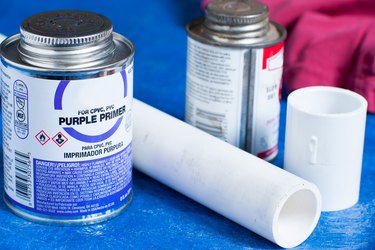
Using purple PVC (polyvinyl chloride) primer and cement is very easy to do. PVC surfaces must be clean in order for the primer to effectively prepare the PVC pipe and fittings for cement. Purple PVC primer chemically cleans the PVC surface, so if the PVC pipe remains somewhat soiled after attempting to wipe the grime off with a cloth rag, the primer should finish the job. Primer also softens the PVC surface so the cement will be able to bond two PVC surfaces tightly. Do not use PVC cement without first using PVC primer. They are to be used simultaneously.
Purple Primer
Step 1

Cut the PVC pipe to length and be sure the ends of the pipe are cut straight. If they are not cut straight, square them up with a pair of PVC pipe cutters.
Video of the Day
Step 2
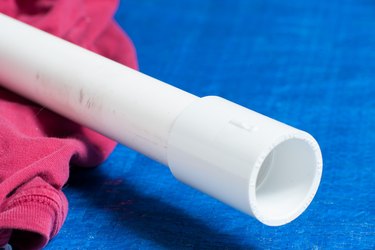
Dry-fit the PVC pipe with the PVC fittings to be sure they go together easily. Wipe accumulated dirt off the pipe and the fitting with a cloth rag if necessary.
Step 3

Apply purple PVC primer to the outside of the PVC pipe and to the inside of the PVC fitting. Allow the primer to dry, which should only take about 10 seconds.
PVC Cement
Step 1
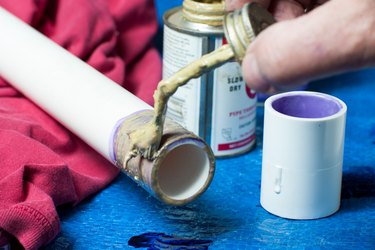
Apply a copious amount of PVC cement to the primed end of the PVC pipe and to the primed surface of the PVC fitting. Do not allow the cement to puddle on the PVC surface.
Step 2
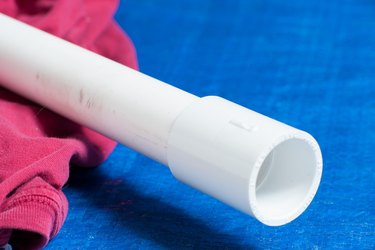
Assemble parts immediately. Twist the fitting slightly to pop any small air bubbles that would otherwise weaken the joint. Wipe any excess cement off with a cloth rag.
Step 3
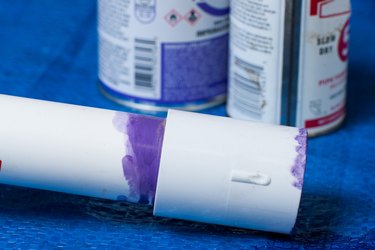
Allow the joint to cure for at least two hours at 60 degrees F. Colder temperatures will require longer cure times before applying water pressure to the joints.
Video of the Day